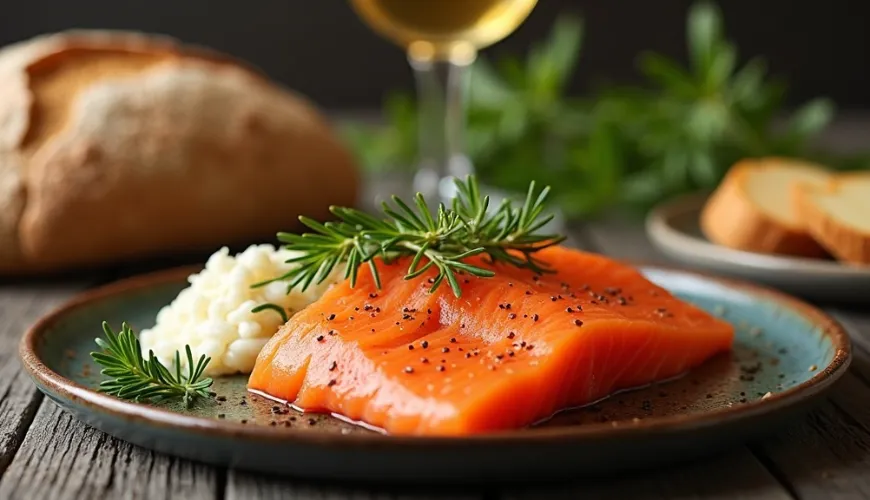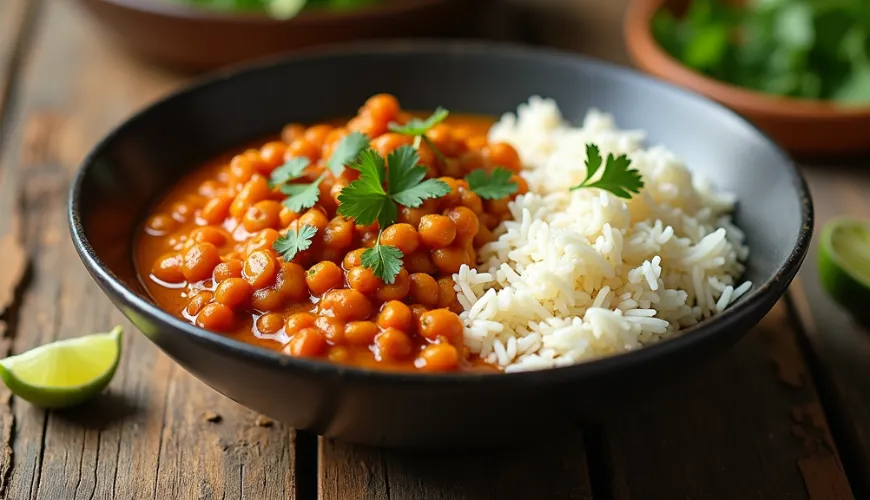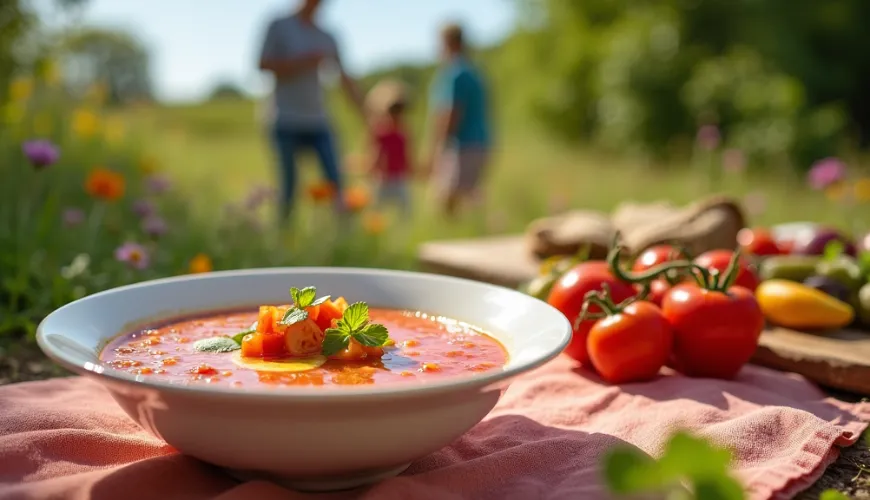
Discover the secrets of the gravlax recipe and surprise your guests

Gravlax - The Nordic Treasure for Your Table
In Northern Europe, many culinary treasures have been born, but few have such history and culture as gravlax – marinated salmon, which today captures the hearts of gourmets all over the world. And it's no wonder. It is a simple yet extraordinarily tasty dish that has found its place both in high gastronomy and in home kitchens. While gravlax is a traditional part of festive tables in Scandinavia, it is just making its way into our homes. Yet, preparing gravlax at home is surprisingly easy – even without special equipment or experience.
What is Gravlax and Where Does It Come From?
The word "gravlax" comes from Old Norse and literally translates to "buried salmon." Originally, fishermen actually buried the salmon in the ground, where it naturally fermented. Today, of course, more civilized methods are used, but the principle remains the same: raw salmon is marinated in a mixture of salt, sugar, and fresh dill, and sometimes other ingredients, and left to marinate in the cold for several days. The result is a delicate, slightly salty, and subtly sweet filet, which is sliced into thin pieces and usually served cold.
Gravlax is often mentioned in connection with the famous Swedish "smörgåsbord," a buffet full of various delicacies. But it is also popular in Norway and Denmark, where gravlax is served with mustard-honey sauce or on rye bread with herb butter. Today, it is also favored by top Czech chefs – including Zdeněk Pohlreich, who has his own recipe for gravlax, often searched for as "gravlax recipe Pohlreich."
How to Prepare Homemade Gravlax from Salmon?
Many people imagine that preparing gravlax is the privilege of trained chefs or professionals. But the opposite is true. Anyone can prepare homemade gravlax, provided they have quality salmon and a bit of patience. The key is the right choice of fish. Ideally, fresh salmon with skin, preferably of organic quality or with MSC certification. If fresh salmon is not available, frozen can be used – just let it thaw and dry it well.
The basic recipe for gravlax is simple and popular in many variations. Most stick to the same core – the combination of salt, sugar, and dill. Some recipes additionally include white pepper, lemon zest, or alcohol – most often vodka, gin, or aquavit.
Recipe for Basic Gravlax from Salmon
- 1 filet of salmon, approximately 600–800 g, with skin
- 2 tablespoons coarse sea salt
- 2 tablespoons brown sugar
- 1 bunch of fresh dill
- 1 teaspoon freshly ground white pepper
- (optional) 2 tablespoons of gin or vodka
First, prepare a mixture of sugar, salt, and pepper. Dry the salmon well with a paper towel. If the filet has bones, carefully remove them with tweezers. Chop the dill finely. Mix half of the dill with the dry mixture and spread it evenly over the meat. Spread the rest of the dill on top. If using alcohol, drizzle it evenly over the meat. Wrap the filet in cling film and place it in a container or baking dish – ideally weighted with a cutting board or a smaller bowl. Place the prepared salmon in the fridge for 48 to 72 hours. Turn it every day and drain any released liquid.
After three days, unwrap the salmon, wipe off the marinade, and dry it. Now you can slice the filet into thin pieces – ideally with a sharp knife angled towards the skin.
Gravlax by Pohlreich - When You Want Something Extra
Zdeněk Pohlreich, known for his precision and emphasis on quality ingredients, prepares gravlax with a gentle twist. His version of the marinade often includes lemon zest, and sometimes a bit of Dijon mustard mixed into the sauce. This gravlax recipe by Pohlreich is often sought after by lovers of milder, more aromatic flavors in online discussions and cookbooks.
Interestingly, Pohlreich often recommends serving gravlax with fresh bread, creamy horseradish, or a gentle mustard sauce with honey and dill. This contrast of sweet and sharp flavors beautifully complements the velvety softness of the marinated salmon.
One of his tips is: "The quality of the ingredients determines the result. If you don't have good salmon, don't make gravlax." And he's right – because what seems simple requires perfection in every detail.
Where Does Gravlax Fit and How to Serve It?
Gravlax is incredibly versatile. For a festive brunch? Perfect. As an appetizer on the Christmas Eve table? Absolutely appropriate. And if you want to treat yourself to a stylish breakfast, gravlax will delight you then – just a few slices on sourdough bread, a bit of arugula, and sour cream.
In the Nordic countries, gravlax is traditionally served with mustard sauce – known as "hovmästarsås" – which combines mustard, sugar, vinegar, salt, oil, and dill. Here, it also pairs well with horseradish, fresh vegetables, or as part of sandwiches. A great option is also serving it with baked potatoes or as part of a tapas menu.
Even children often like gravlax – precisely because of its mild flavor and easy combination with favorite side dishes. And if you're looking for a way to impress guests with something unusual, homemade gravlax is exactly the type of dish that surprises with its simplicity and luxurious impression.
Gravlax and a Healthy Lifestyle
It's no secret that salmon is a rich source of omega-3 fatty acids, quality proteins, and vitamins D and B12. Therefore, gravlax is not only tasty but also healthy. Unlike smoked salmon, it doesn't contain any chemical preservatives or smoke additives – everything is the result of natural marination. And since no heat processing is needed for preparation, all nutrients are preserved.
From a nutritional perspective, gravlax is an excellent choice for those who care about a healthy diet but don't want to give up gourmet experiences. Combined with whole-grain bread, vegetables, and herbs, it offers a full meal full of flavors and energy.
Sustainability and Fish Selection
When choosing salmon for gravlax, it's important to consider the environmental impact. Ideally, choose fish from certified farms or wild fisheries with the MSC (Marine Stewardship Council) label. This choice ensures not only higher quality meat but also kindness to the marine ecosystem. Ferwer supports such responsible approaches – because sustainability doesn't start in the kitchen, but already when purchasing ingredients.
The experience of one customer who decided to prepare gravlax as an alternative to traditional Christmas Eve fish speaks for itself: "I wanted something light but festive. Gravlax was a success even with grandma, who usually doesn't like fish much. In the end, she asked for the recipe." Moments like these show that even a simple dish can bring generations together – and become part of new traditions.
Whether you choose classic gravlax or try a version inspired by chefs like Pohlreich, one thing is certain – gravlax will teach you that even simplicity can be exceptional. Marinated salmon is an ideal ambassador of Nordic culture, bringing not only delicate taste but also a touch of elegance and natural purity to the Czech table.

